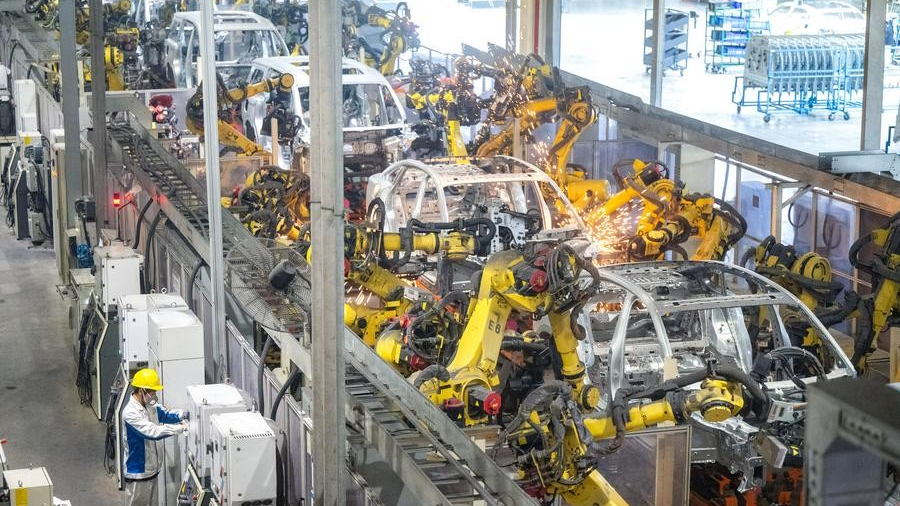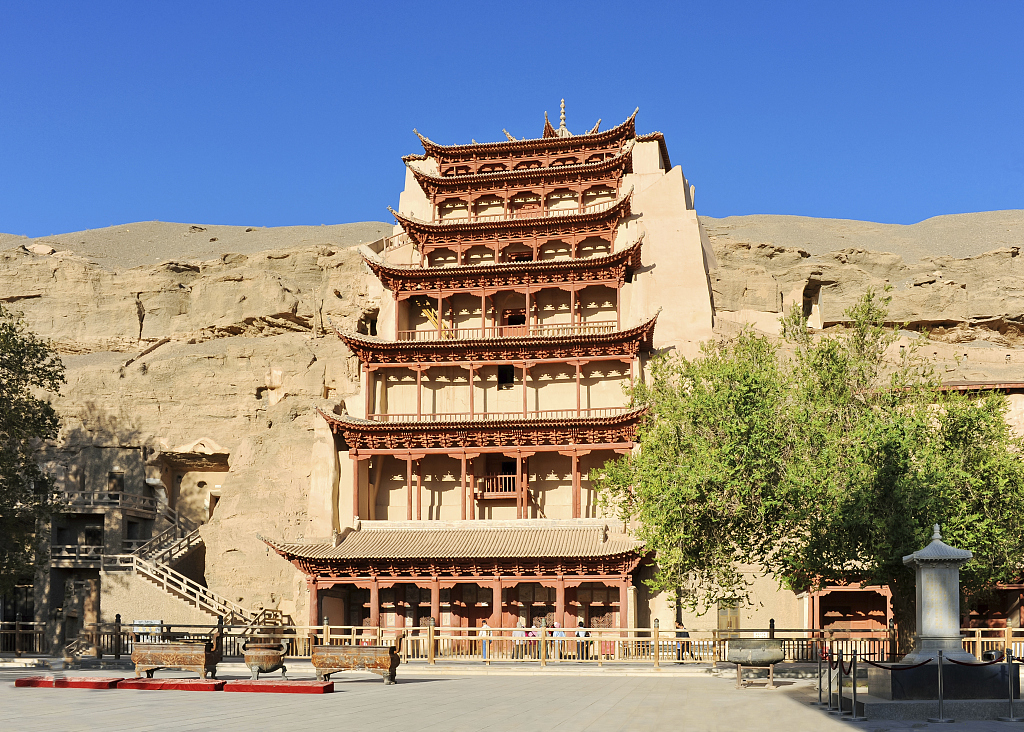[CGTN]Gao Lei,Xia Lu:China's west land: A strong development engine for the rest
发布时间:2024-04-25Chinese President Xi Jinping on April 23 presided over a symposium in Chongqing and delivered an important speech on promoting the development of the western region in the new era.
In his keynote speech, Xi, also general secretary of the Communist Party of China (CPC) Central Committee and chairman of the Central Military Commission, stressed that the western region plays a crucial role in the overall picture of national reform, development, and stability. It is necessary to consistently implement the policies and measures of the CPC Central Committee to promote the development of the western region, further forming a new pattern of greater protection, openness, and high-quality development, enhancing the overall strength and sustainable development capability of the region, and striving to write a new chapter in the development of the region in the process of China's modernization.
In the past five years, the CPC Central Committee has made a series of arrangements for promoting the large-scale development of the western region in the new era and forming a new pattern. As a result, the region has made significant achievements in environmental protection, improvement of its high-quality development capacity, construction of an open economy, improvement of infrastructure and the people's living standards, as well as the battle against poverty as scheduled, embarking on a new journey of building a modern socialist country in all respects. And in the future, a city cluster with Chengdu and Chongqing as the locomotive will also serve as the engine for high-quality development.
The western region's achievement with the new development pattern
As a country with a vast territory, China is actually facing huge differences in population and resource endowments in various regions, making it a constantly major issue to coordinate regional development. The CPC has long recognized the significance of the dialectic of coordinated regional development, particularly in the new era. Therefore, the Central Committee issued a series of guiding opinions and related measures to focus on key points, make up for shortcomings, strengths and weaknesses, and form a new pattern of coordinated development.
As President Xi put it, China could not simply require all regions to reach the same level of economic development, but it should take the path of rational division of labor and optimized development in accordance with particular conditions of each region. The spatial layout of China's regional coordinated development has become clearer and clearer, and it has also laid down the strategic foundation for the great rejuvenation of the Chinese nation. As a result, the western region has made major historic achievements in its economic and social development due to the coordinated development strategy.
In today's western region, the territory of green development has continued to expand, with a total of more than 320 million mu of farmland returned to forest and grassland, and the main stream of the Yangtze River and the Yellow River has reached Class II water quality, which is drinkable after regular purification. Breaking through the geographical disadvantages in the past, the western region has been witnessing an open pattern of land and sea linkage at home and abroad as well as mutual assistance between the east and the west incrementally taking shape. In Chongqing, the new land-sea corridor in the west and the China-Europe freight train have been seamlessly connected with each other; in Xinjiang Uygur Autonomous Region, the first pilot free trade zone in China's northwest border region has been officially inaugurated; and in Guangxi Zhuang Autonomous Region, the container throughput of the Beibu Gulf Port has ushered in a 'new chapter.'
In today's western region, new industries and new forms of business have been booming, with nine national-level strategic new industrial clusters such as new materials and biomedicine and five national-level advanced manufacturing clusters such as electronic information and aviation having been built. As a consequence, the regional GDP has increased from 20.5 trillion yuan in 2019 to 26.9 trillion yuan in 2023, with an average annual growth rate of 4.9 percent, ranking first compared with the eastern, central, and northeastern regions.
Since the new era, the CPC Central Committee has proposed to achieve regional development through a more effectively coordinated mechanism. As the 'main frontier window' of the large-scale development of the western region, the Chengdu-Chongqing city cluster has been designated as the 'vanguard' in the country's vigorous implementation of the regional coordinated development strategy.
Chongqing and Chengdu, both national-level mega urban centers in the western region with outstanding geographical advantages and key strategic positions, are the strategic pivot of the development and opening up of the region as well as the linking point of the Belt and Road Initiative and the Yangtze River Economic Belt. What is more, promoting the integrated development of the city cluster can serve as an effective carrier for the development and opening up of the western region, an important growth pole for the country's high-quality development, and a major breakthrough in the coordinated development of urban and rural areas.
Though the Chengdu-Chongqing city cluster is the latest to boom, it has enjoyed the fastest momentum, with an average annual growth rate of seven percent during the past years, the highest one among all other city clusters. Yet, in terms of economic aggregate or per capita efficiency, the Chengdu-Chongqing city cluster is still far behind other developed ones such as the Beijing-Tianjin-Hebei cluster and the Yangtze River Delta cluster. From a national and international perspective, the Chengdu-Chongqing city cluster and even the entire western region are still underdeveloped areas, and speeding up development is still the first priority.
On the one hand, it is necessary to promote transportation connecting capability. With the construction of two comprehensive transportation hubs in Chongqing and Chengdu as the core, with high-speed railways, intercity railways and highways as the backbone, relying on the comprehensive transportation channel, effective policies and measures have been implemented for each city, so as to realize the interconnection and fast arrival among cities and towns in the region.
On the other hand, it is also necessary to realize that the market shall be commonly nurtured and mutually recognized in the region. Priority will be given to promoting the integrated construction of capital markets, regional customs clearance, financial infrastructure, information networks and service platforms, human resources markets, technology markets, market order, and credit systems as well as to promoting the implementation of a unified market access system and standards.
(Gao Lei, a special commentator for CGTN, is an associate professor at the Center for Xi Jinping Thoughts on Opening-up, Research Institute of Globalization and China's Modernization, University of International Business and Economics. Xia Lu, a special commentator for CGTN, is an associate professor at the National Academy for Development and Strategy, the Academy of Xi Jinping Thoughts on Socialism with Chinese Characteristics for a New Era, Renmin University of China.)
CGTN:Gao Lei,Xia Lu:China's west land: A strong development engine for the rest







